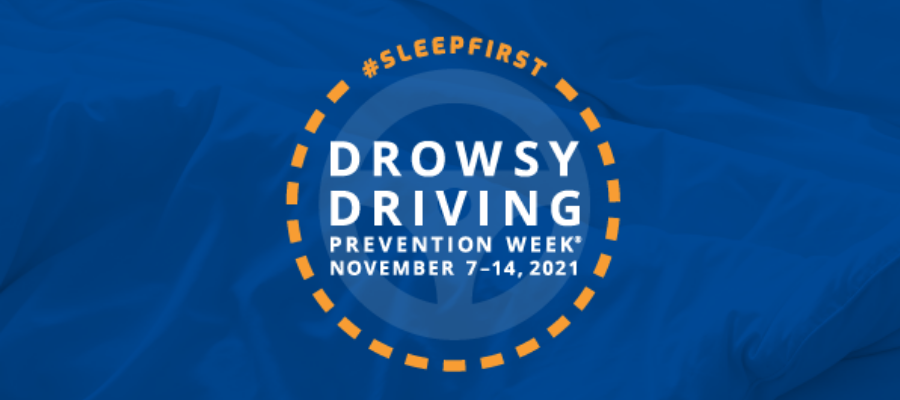Drowsy Driving Prevention Week 2021
Clocks were turned back an hour in the US this past weekend and with that comes sleep disruption. It is for this reason that the National Sleep Foundation has started the initiative of Drowsy Driving Prevention Week with the goal of providing information on how to improve sleep hygiene and prevent accidents.
Dramatic increase in traffic accidents following DST
Drowsy driving is rampant in the days following Daylight Savings Time. In the US alone, it is estimated that the risk of fatal traffic accidents increase by 6% following the timeshift. The rate of near-misses and non-fatal accidents is conceivably higher than this.
Advice to prevent drowsy driving
Preventing drowsy driving starts with being aware of the state you are in. Ask yourself:
“Am I alert enough to operate a 3,000-pound moving machine on public roads?”
- Do what you can to ensure that you are well rested. This means having minimum 6 hours of quality sleep, and making sure that you do not drink any alcohol in the evenings.
- Consider whether you have a busy schedule, as working more than 60 hours per week increases the risk of drowsy driving by 40%.
- Be mindful to try to avoid driving at hours where you would otherwise be asleep.
You can find more advice on how to prevent drowsy driving at the National Sleep Foundations website.
Timeshift fatigued? – Try a power nap!
If you experience disturbed sleep following the time shift, boost your alertness and wellbeing by taking a short power nap during the daytime. 20 minutes of rest is all it takes to improve your performance significantly. Read our guide to the perfect power nap.


